Tarantula Molting Thread
- Thread starter myles756
- Start date
- Joined
- Dec 11, 2008
- Messages
- 1,661
Ts are not aggressive, they are defensive. There is a big difference between the two words when telling someone about your pet. The only reason i can see to call them aggressive, is if you have tarantulas just to look cool and dangerous, because they are so scary and aggressive. If you aren't, then wouldn't you rather tell people the truth, that some are very defensive of their territories, but they don't actively decide to hurt you. In other words, don't frakkin' mess with them and they won't frakkin' mess with you. Working off instinct and choosing to hurt something are two very different things IMO. Sorry, for the semi-rant, i just have never put my opinion on the matter so well.I wanted to start a thread for molting. And I have a question. Could someone tell me the obvious signs besides aggresion and web laying of a molt coming soon?
Now, back to the thread.
Signs of an impending molt could be:
*lethargy (yes this and the next one are exact opposites, but both can
-happen)
*acting skittish/ defensive (especially around/ about their hide/burrow/tube
-web)
*drab colors
*dark abdomen
*webbing up the substrate
*kicking hair into that webbed up substrate
*cessation of eating= acts scared of/ completely avoids all prey
*burrowing excessively
*deciding that it needs some 'me' time and closes up its burrow/ hide
*If it is a sling that has been molting on a monthly basis(and you have been
-keeping track), that could be a 'sign' to look for
*sometimes you can observe/ take note that they will consistently molt
-in one place in the enclosure, so a 'sign' could be them hanging out in that
-spot a lot. (The problem with this one is that they may already hang out
-in that place all the time.)
That is really all of the things i can think of that i have noticed about our Ts when they are in pre-molt. i started typing this up when there were only two replies, so i apologize if they have been said already. Real life was more important at the moment.
The search function here sometimes needs to be taken out on the town, so why don't you do so. There are lots of threads about molting, so go advanced and search by the titles and you should get a plethora of information/ pictures of Ts molting. The search function is really quite helpful if you let it/ touch it(use quotes) in the right places..........
Lastly, i was not trying to be mean to you in any way. There are a lot of people around the forum that use the word aggressive and well, opinions were like kittens and i was giving them away......................
- Joined
- Aug 21, 2009
- Messages
- 941
OP read this and weep.
This is what happens when you have no idea your spider is molting.
Lesson learnt though and I am happy about that.
Paul
http://www.arachnoboards.com/ab/showthread.php?t=163322
This is what happens when you have no idea your spider is molting.
Lesson learnt though and I am happy about that.
Paul
http://www.arachnoboards.com/ab/showthread.php?t=163322
- Joined
- Aug 17, 2009
- Messages
- 138
About the bald spot: does this happen always/most of the time? I have 2 T's, both arrived with bald abdomens but I assumed either they got bugged a lot by their previous owner or lost it during transport (stress, I don't know). First one molted on me about 3 weeks after I received him but it is young. He hasn't molted a second time on me yet so I don't know if losing hair on the abdomen is normal (and if so, how much hair it would lose)
Now I received a 5.25" GBB (I think max size) and it has a bald spot. Does it mean its due for a molt as well? The abdomen itself is still peach so not too soon, but maybe a few weeks like with my first T?
Now I received a 5.25" GBB (I think max size) and it has a bald spot. Does it mean its due for a molt as well? The abdomen itself is still peach so not too soon, but maybe a few weeks like with my first T?
- Joined
- Dec 11, 2008
- Messages
- 1,661
i guess it just depends on how much of a hair kicker they are. They almost always have a little bit of a bald spot by the time they molt, but it is not really a 'sign' that they are about to molt.About the bald spot: does this happen always/most of the time?
Telling us what kind of T they are and how big, would help, because we could tell you if the species is known to be big hair kickers.I have 2 T's, both arrived with bald abdomens but I assumed either they got bugged a lot by their previous owner or lost it during transport (stress, I don't know). First one molted on me about 3 weeks after I received him but it is young. He hasn't molted a second time on me yet so I don't know if losing hair on the abdomen is normal (and if so, how much hair it would lose)
If they were shipped and were wrapped in paper towels, all snuggly like, then they can have hair rubbed off in transit.
A 5.25" C. cyaneopubescens!!!!!!! i am so envious.:drool: Is it a lady or a lad?Now I received a 5.25" GBB (I think max size) and it has a bald spot.
How big of a bald spot are we talking about here? i am really thinking that if it is a large one, then it is being rubbed off during shipping.
No one can tell you how long it will be before your T molts. If the abdomen is still nice and pink, then it won't be soon.Does it mean its due for a molt as well? The abdomen itself is still peach so not too soon, but maybe a few weeks like with my first T?
- Joined
- Apr 15, 2005
- Messages
- 384
The presence of a bald spot alone doesn't necessarily have anything to do with a molt. My hair kickers always seem to get them, and the others never seem to get them. I have a female A chalcodes that has had a pink butt for two years now. Still no molt.
A bald spot is a very handy gauge to let you know when a molt is close, because it allows you to see the darkening of the abdomen.
This little B smithi has always been a kicker. That peachy little bare bottom lets me know she isn't anywhere near a molt.

In this picture it is clear she is getting close. If I recall, she molted about a week later.

My G pulchra never gets bald spots, and she is such a velvety jet black, she never seems to get the faded look either. I pretty much have to rely on her molt recorders and behavior to give me an indication when she might be expected to molt.
She was molting once a year, every Sept. Last year she skipped a molt. This year she was back on schedule, first week in Sept.



Sometimes it just boils down the the individual spider. Our B albopilosum female surprises me with molts all the time. The glutton will eat right up till the last day.
A bald spot is a very handy gauge to let you know when a molt is close, because it allows you to see the darkening of the abdomen.
This little B smithi has always been a kicker. That peachy little bare bottom lets me know she isn't anywhere near a molt.

In this picture it is clear she is getting close. If I recall, she molted about a week later.

My G pulchra never gets bald spots, and she is such a velvety jet black, she never seems to get the faded look either. I pretty much have to rely on her molt recorders and behavior to give me an indication when she might be expected to molt.
She was molting once a year, every Sept. Last year she skipped a molt. This year she was back on schedule, first week in Sept.



Sometimes it just boils down the the individual spider. Our B albopilosum female surprises me with molts all the time. The glutton will eat right up till the last day.
- Joined
- Jul 20, 2007
- Messages
- 5,357
My contribution:
Molting upright:
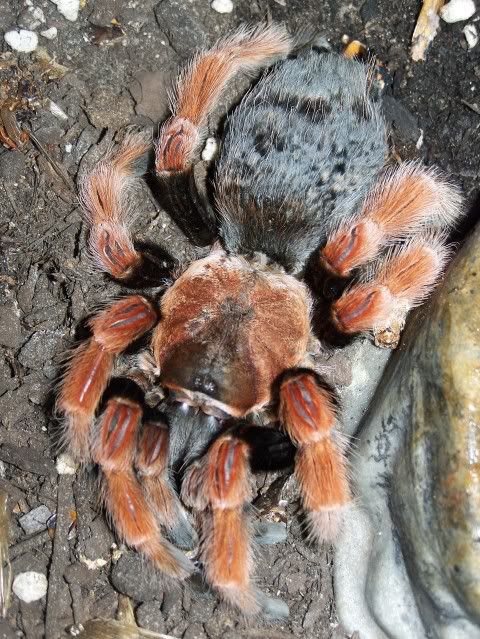
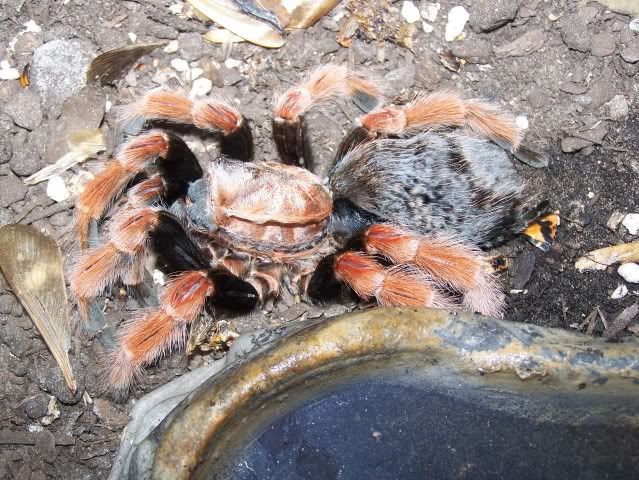
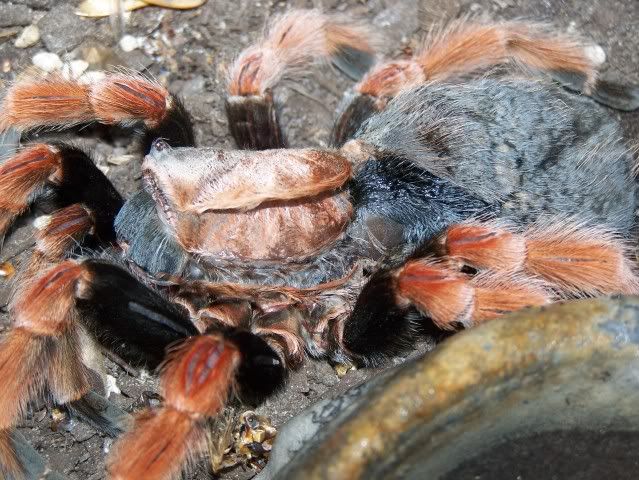
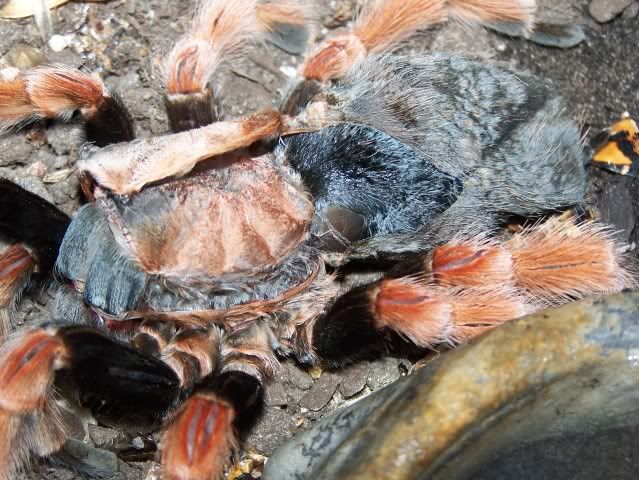
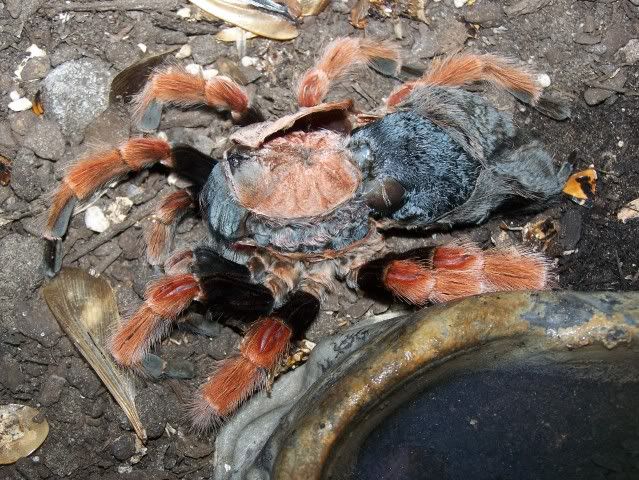

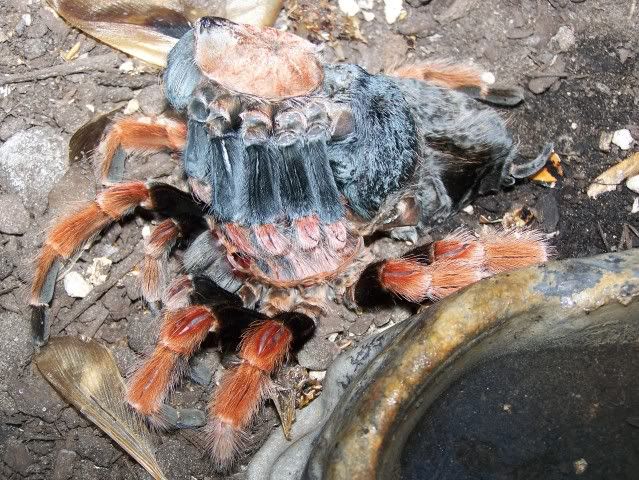

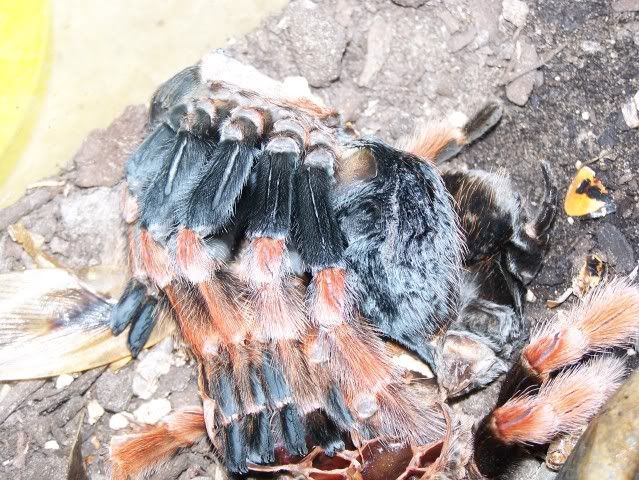
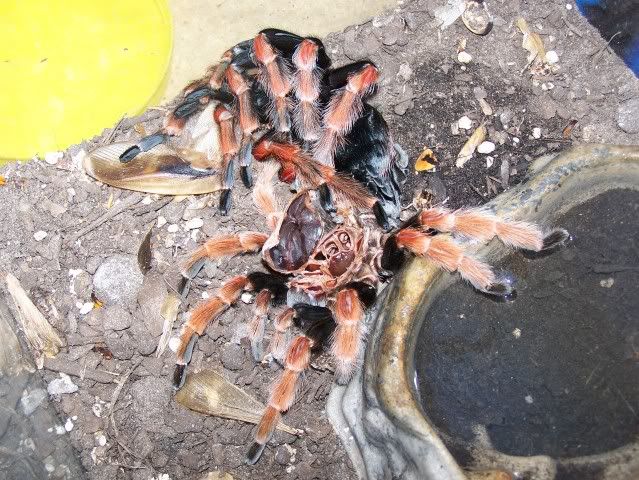
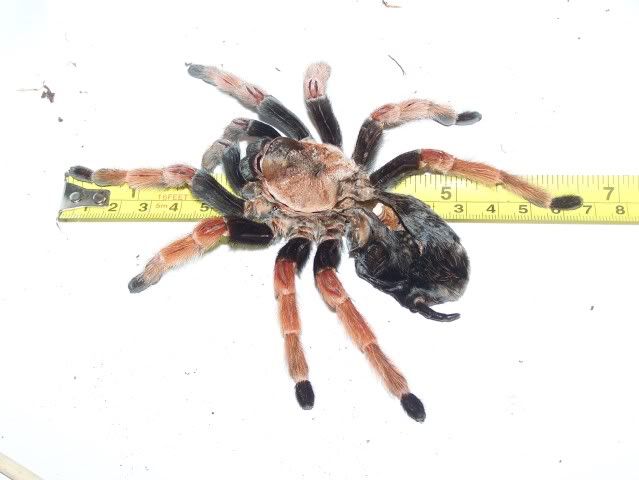
Molting upright:











- Joined
- Dec 11, 2008
- Messages
- 1,661
xhexdx- That was really neat, i knew it could happen, but don't remember ever seeing pics of it.
- Joined
- Jul 20, 2007
- Messages
- 5,357
Thanks. I rarely catch my spiders molting, and even more rarely catch one molting upright.
Funny thing is I had a B. emilia do the same thing about a week prior to her doing it.
Also, that boehmei's molt prior to this one was upright as well.
Funny thing is I had a B. emilia do the same thing about a week prior to her doing it.
Also, that boehmei's molt prior to this one was upright as well.
- Joined
- May 16, 2009
- Messages
- 563
Molting upright *looks* as if it would take more energy to accomplish, pushing your new soft body out upwards against gravity and everything. Does an upright molt take longer than an upside-down molt, or are the time lengths comparable?
- Joined
- Jul 20, 2007
- Messages
- 5,357
The first picture in that sequence was taken at 7:45 and the last was taken at 9:01. I'd say they're comparable from start to finish; I'm not sure if you add on the amount of time they're 'incapacitated' before they begin the actual molt (i.e. lying upside down on the mat). You'd have to see the spider flip over, and you'd just have to know when a spider that is going to molt upright is at that point, which is probably near impossible to pinpoint.
--Joe
--Joe
- Joined
- May 16, 2009
- Messages
- 563
Fair enough :?, thanks for the info! I understand that it's normal for Ts to do this, I was just wondering what the advantages/disadvantages a T would experience for molting in either of those positions. If it was the same deal both ways, why would the upside-down position be observed so much more frequently than the other, and even the sideways molts sometimes?
I might be overcomplicating things here, but I just want to understand.
I might be overcomplicating things here, but I just want to understand.
- Joined
- Jul 20, 2007
- Messages
- 5,357
I get what you're saying, unfortunately you're asking questions I can't answer.
- Joined
- Jun 29, 2007
- Messages
- 821
A little to add.
GBB my gal 7UP
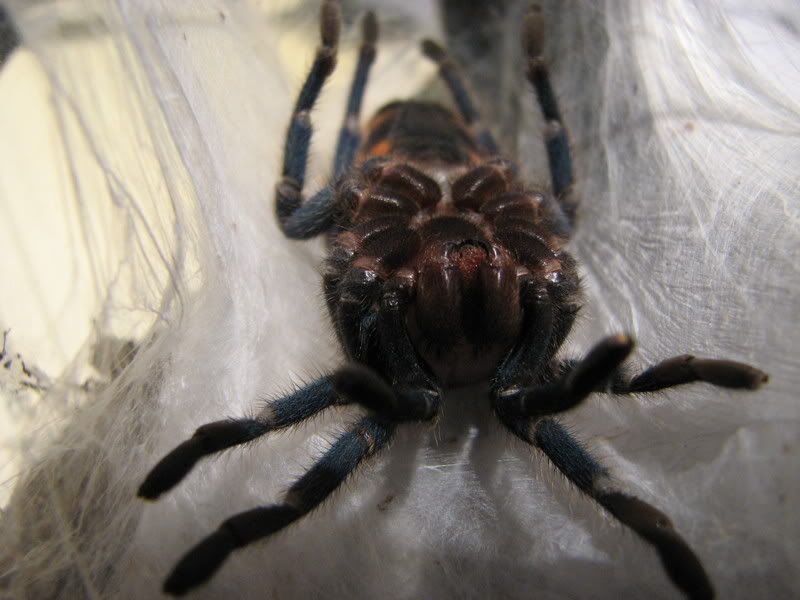
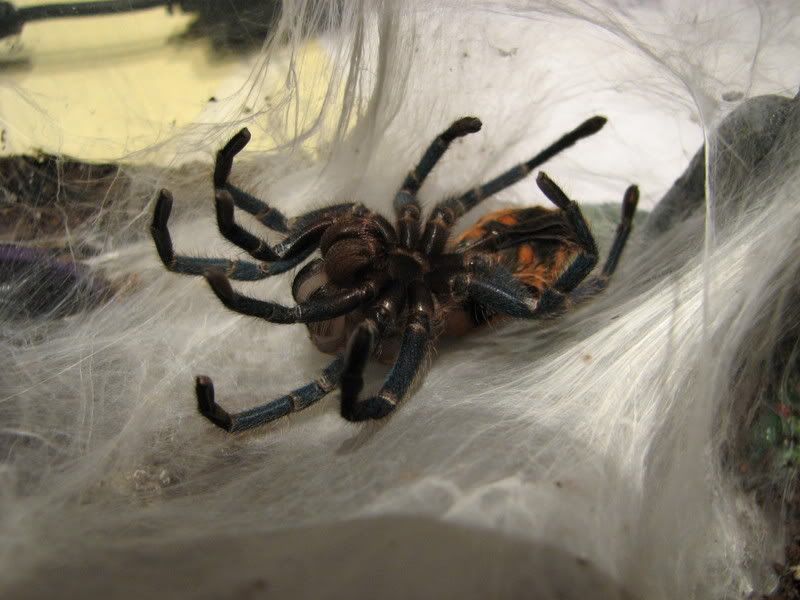
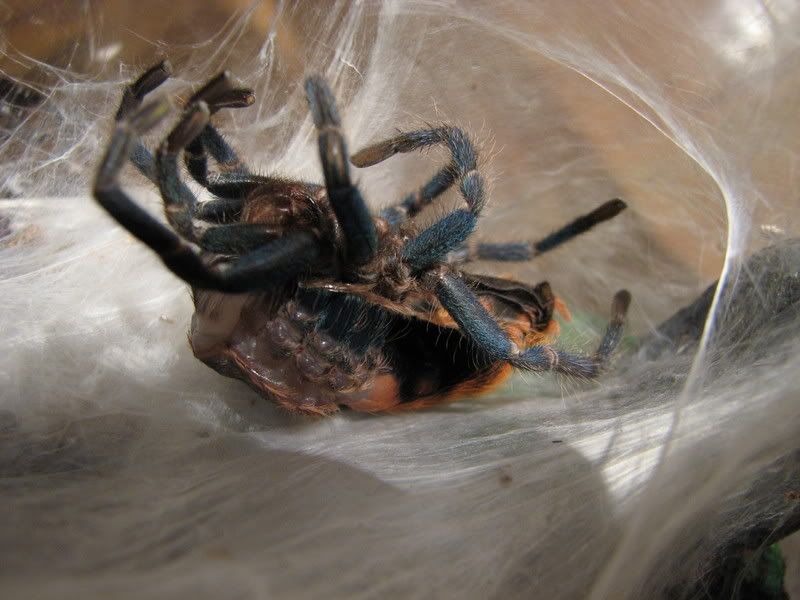
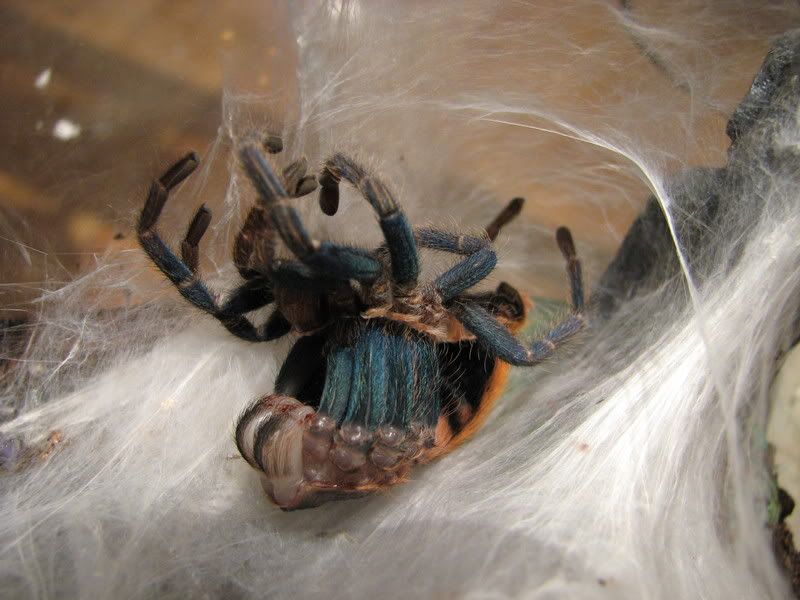
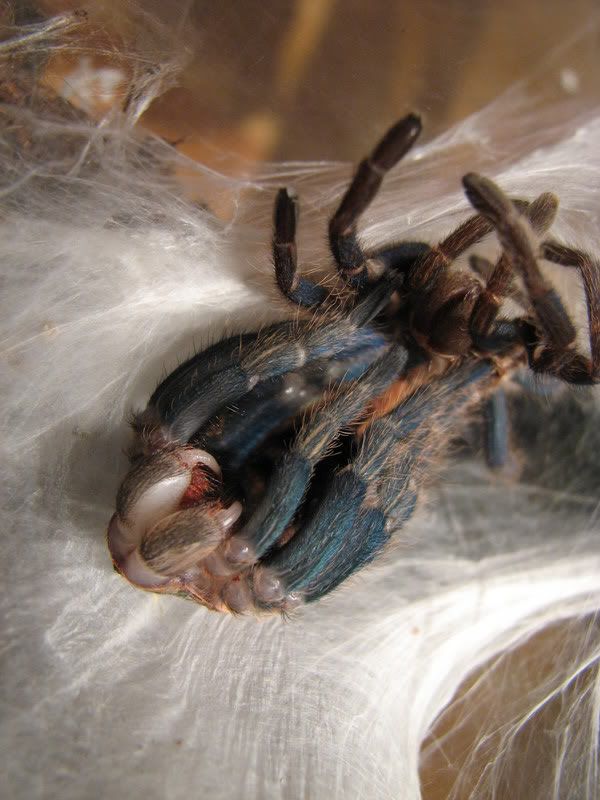
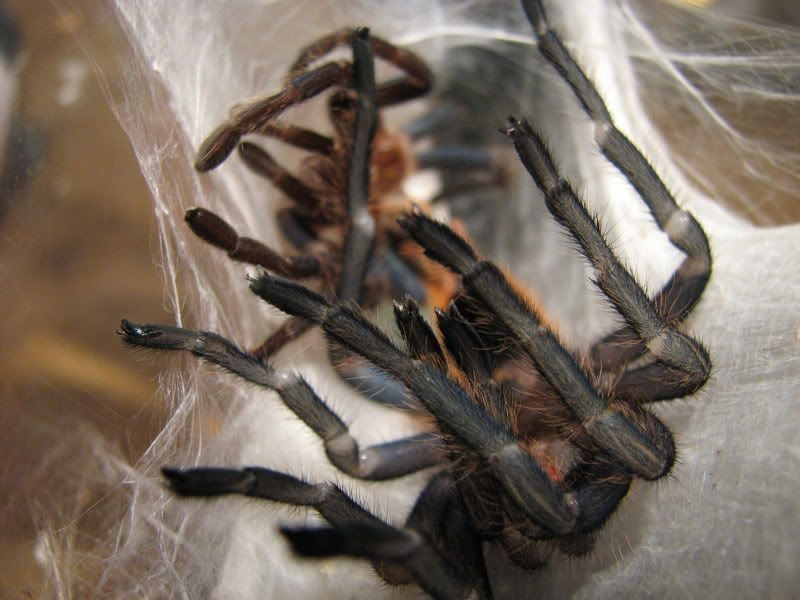
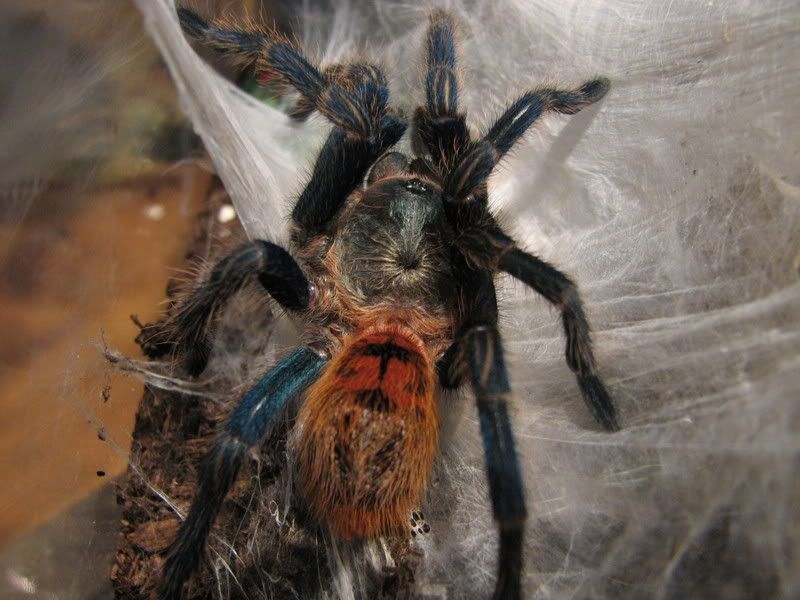
PIG-
GBB my gal 7UP







PIG-
- Joined
- Jun 29, 2007
- Messages
- 821
How does a T flip over???;P
We always see T's molting. but one day I got this series of shots. In 3 yrs I have only seen this once.
'The Flip'
Mosey up to the side
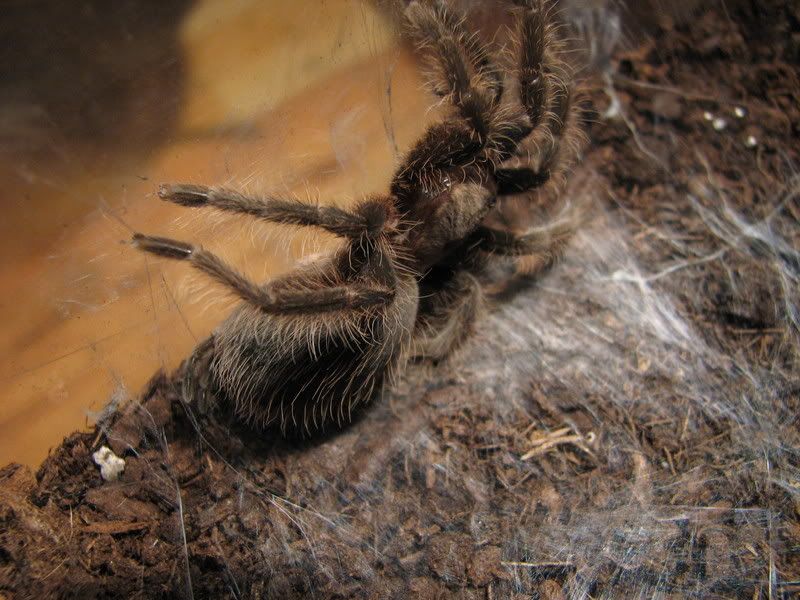
Push off
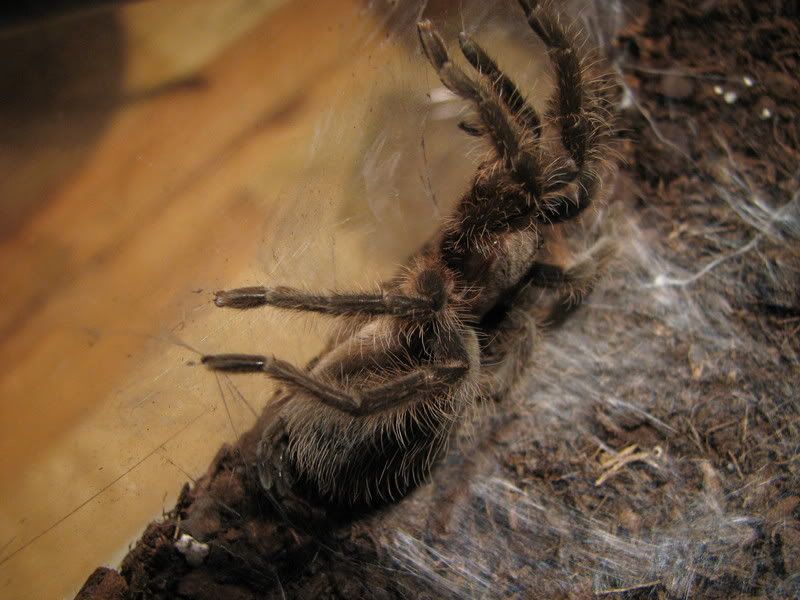
Ease on over

Splash down

All done

PIG-
We always see T's molting. but one day I got this series of shots. In 3 yrs I have only seen this once.
'The Flip'
Mosey up to the side

Push off

Ease on over

Splash down

All done

PIG-
